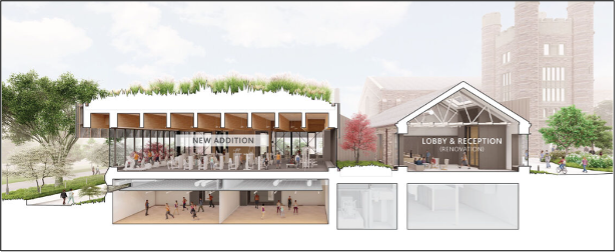Higher Ed’s Tipping Point for Mass Timber is Here
How Mass Timber Can be Part of a Campus’ Decarbonization Strategy
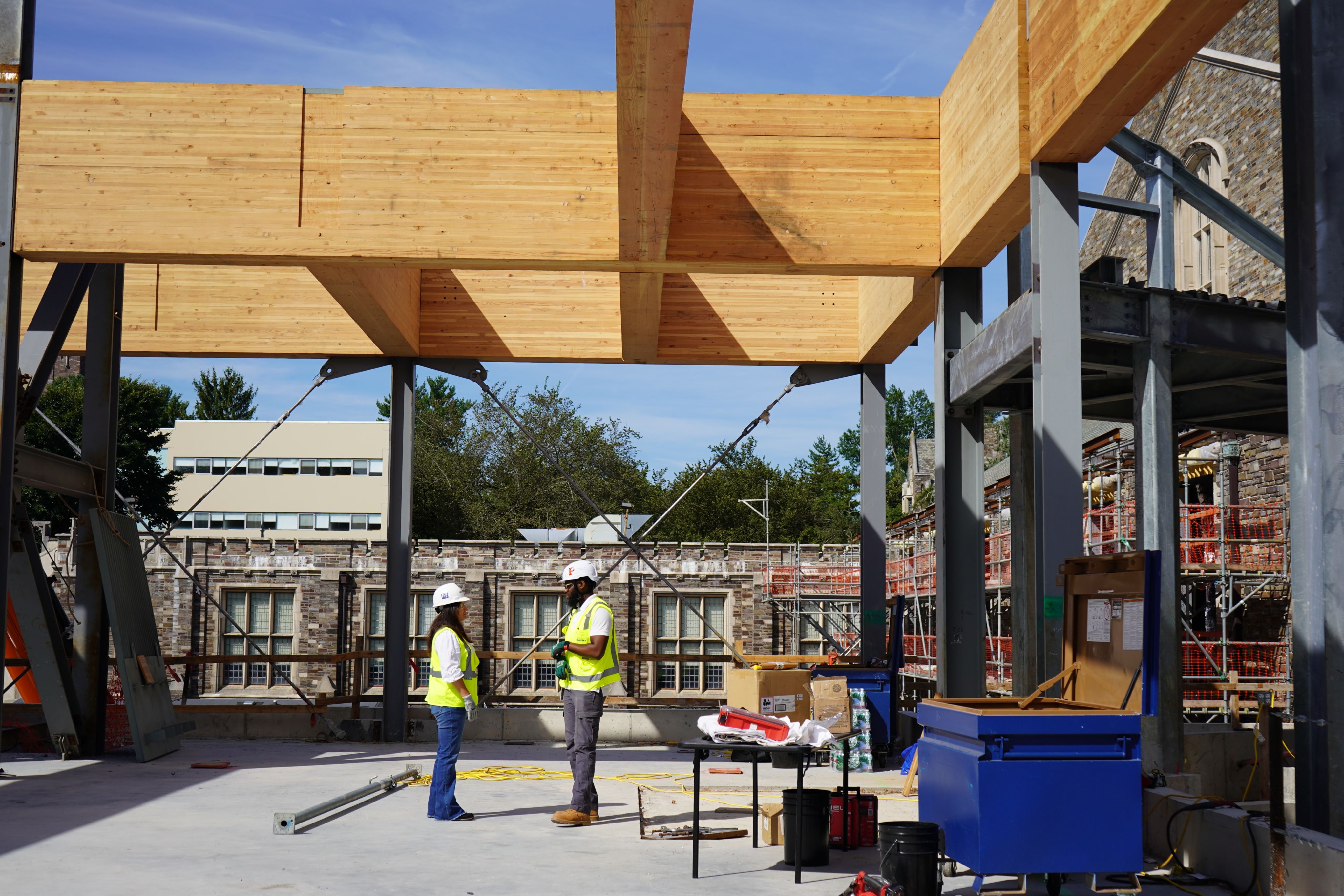
There are moments in time when the right energy, circumstances, and elements intersect to create a tipping point. It’s my belief that the moment is here for colleges and universities when it comes to using mass timber in construction to create positive, lasting, sustainable change on campuses. Consider:
- New sustainability related policies and codes are necessitating renovation of existing buildings and in some cases, construction of new buildings
- University decarbonization and sustainability goals are driving university investment decisions
- Students, faculty, and staff are looking at schools’ environmental stewardship when making decisions on where to learn and work
- The use of mass timber creates a biophilic effect, connecting us to nature while improving our emotional and physical health and productivity
- New building codes are making mass timber projects cost competitive and time efficient compared to other conventional construction methods
- Mass timber delivers a captivating aesthetic that adds a rustic, natural, streamlined look that also eliminates costs for elements such as wall finishes, allowing the beautiful nature of wood’s unique architectural design to stand out
In short, mass timber is having its moment. But what exactly is mass timber?
Mass Timber is more than just wood
As the name implies, mass timber is wood, but in the form of engineered products, of which there are eight main types (see image to the right).
Skanska has decades of experience building with all types of mass timber. Because they are structural products, mass timber components must meet strict standards for fire resistance, water resistance and other metrics, just like concrete and steel. What’s more, extensive research has established mass timber construction is as safe as concrete and steel and boasts many sustainability benefits.
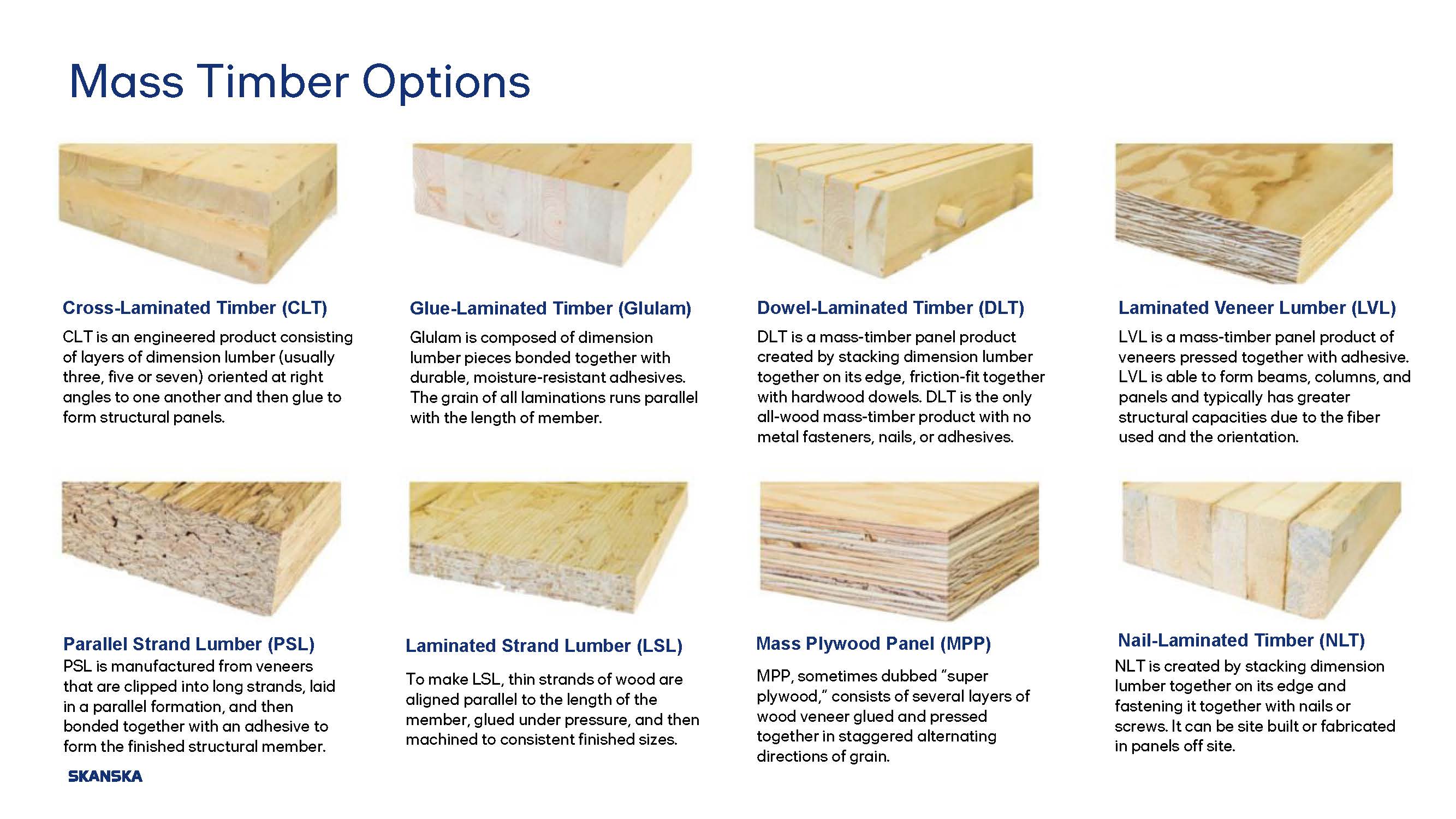
Types of Mass Timber - Image Credit: Mass Timber Research Institute
Types of Mass Timber - Image Credit: Mass Timber Research Institute
Mass timber can be part of a campus decarbonization strategy
When clients, design teams, and builders effectively collaborate, we’ve seen how mass timber can help lower greenhouse gas emissions by around 10 to 15 percent.
At Skanska, we’ve seen mass timber roofs produce a 36 percent reduction in CO2-e compared to steel structures; green roofs result in a 50 percent reduction in stormwater retention volume; and natural ventilation produces a six percent reduction in annual CO2 emissions. This is good news for colleges and universities, which can substantially reduce their carbon emissions from facilities, both in terms of operational carbon and embodied carbon.
Mass timber is a sustainable, regenerative resource
Sustainability is a key differentiator between mass timber and other building materials. Countless elements make it one of the most sustainable building materials today, and chief among them is its regenerative nature. If sourced from a properly managed forest, timber can also be an inexhaustible resource. Ultimately, whether mass timber elements are recycled, upcycled or eventually composted, the sustainable nature of timber is incomparable to other building materials.
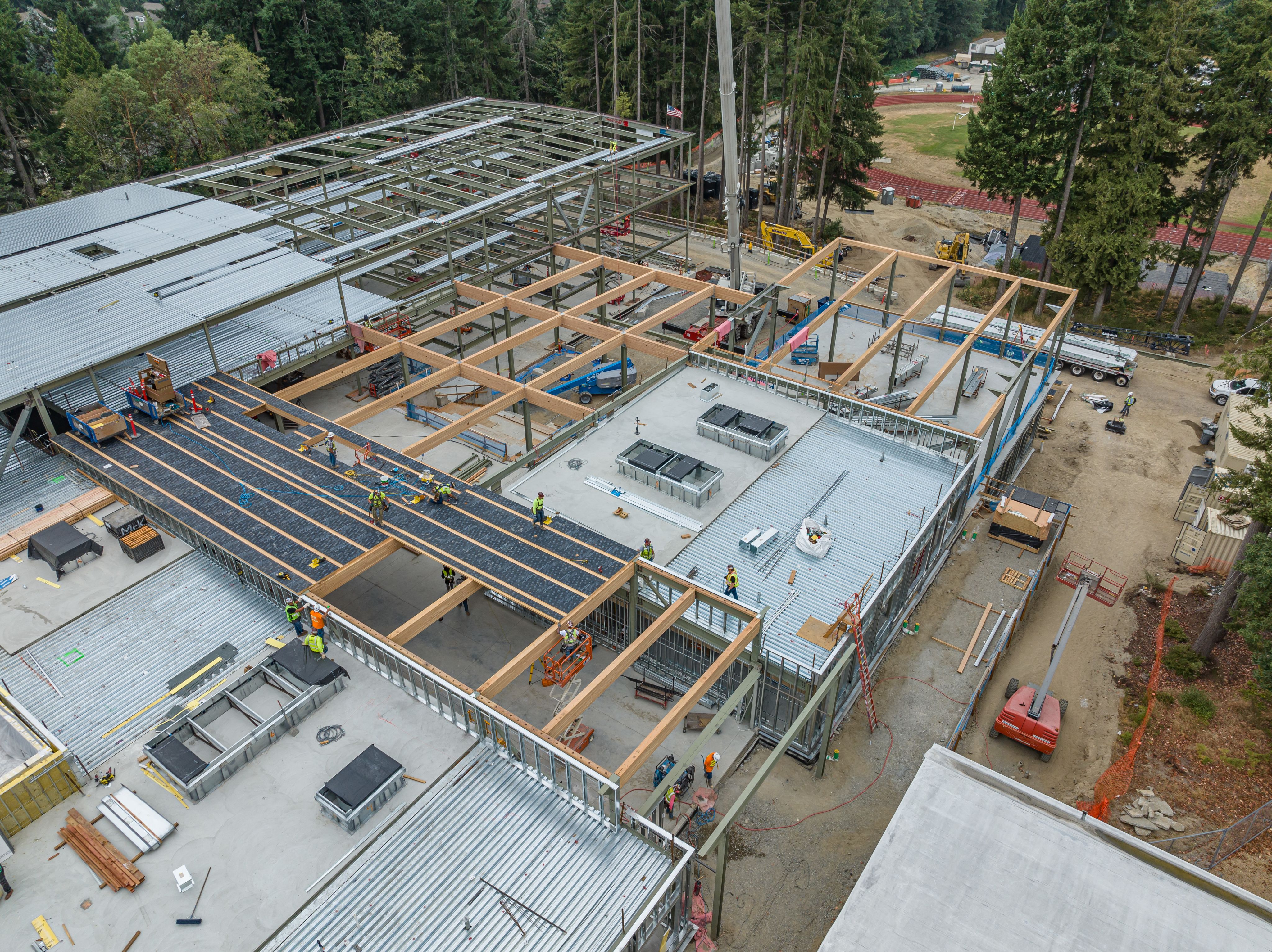
Mass timber drives construction efficiency and cost savings
Mass timber offers a substantial reduction in construction time across a project’s duration versus steel or concrete. The key lies in prefabrication—the ability to shift significant portions of the process to a controlled factory environment. Mass timber also provides superstructure cost savings due to the prefabrication of timber components. However, the real time and cost savings are in the pre-coordination with other trades such as mechanical, electrical, plumbing and fire protection (MEPF), stairs, elevators, and exterior wall systems.
Because Skanska can self-perform not only mass timber, but also steel and concrete construction in some markets, we have been able to deliver highly complex, high-quality projects in shorter times and with leaner budgets. Industry standard suggests a 20 percent reduction, but on some of our Skanska projects, we’ve been able to exceed that.
This culture of prefabrication on mass timber projects provides an added benefit to higher education clients, most of which are building on active campuses. It allows for better planning of delivery schedules, minimizing site disruption and reducing interruptions in the normal flow of campus life.
Mass timber’s aesthetic appeal can improve students’ experience
The aesthetic of mass timber cannot be understated. Mass timber creates a biophilic effect—elevating a space’s visual appeal through the use of natural elements, while improving occupants’ mood, health, and even productivity. Americans spend approximately 90 percent of their time indoors, so optimizing students’ wellbeing through design and construction will continue to be a priority for designers, engineers, and contractors who help universities improve the student experience through the buildings where students learn and live.
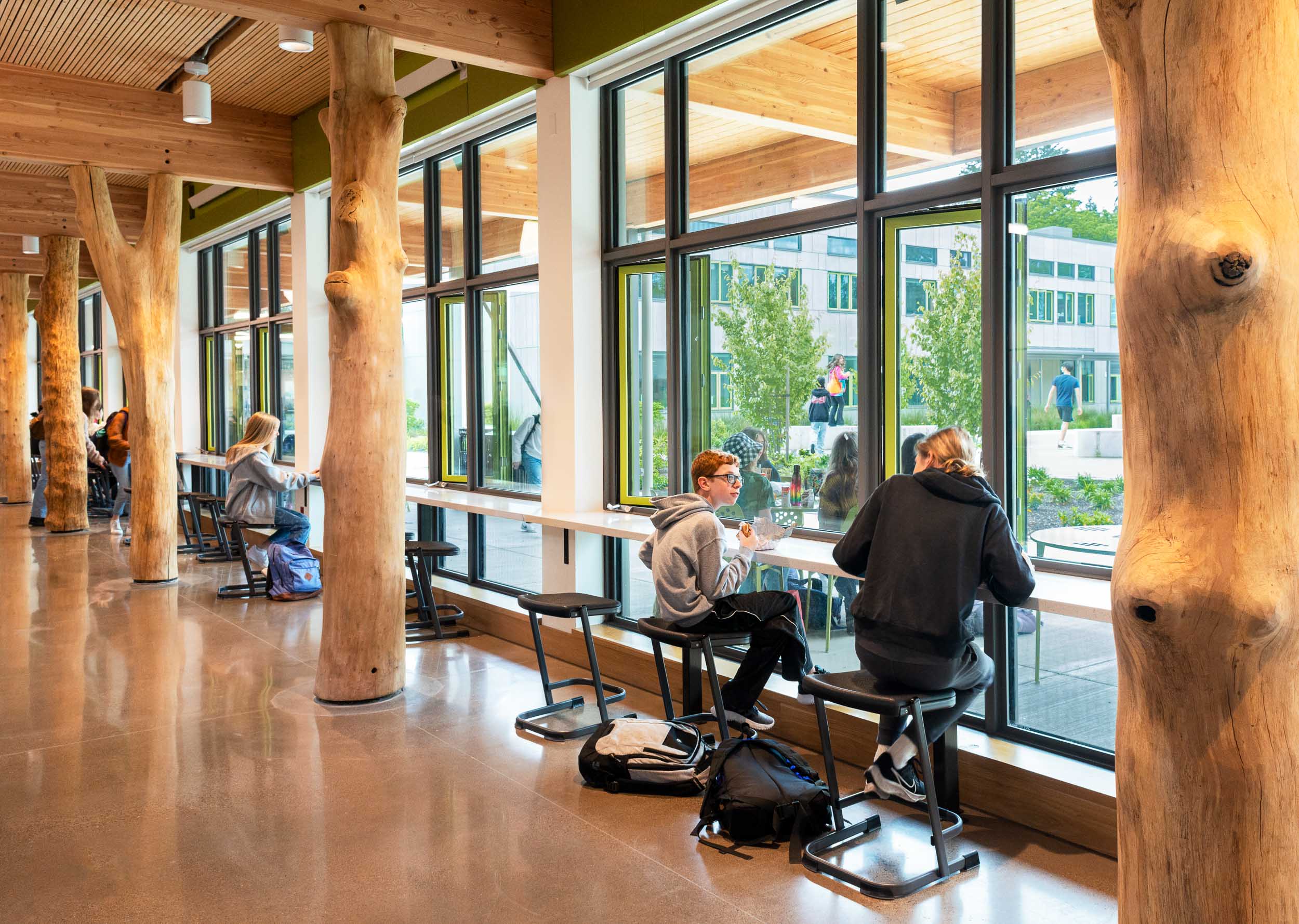
Lakeridge Middle School, Lake Oswego School District
Lakeridge Middle School, Lake Oswego School District
Builder’s risk insurance challenges are beginning to ease
The rate for buyer’s risk insurance for mass timber projects remains higher than it should, though we’ve seen some reduction over the past two years. The common misconception with insurers is that mass timber is like wood frame construction when, in fact, it’s much closer—in terms of fire and water resistance—to concrete or steel construction.
Insurers and underwriters admit they need more education on mass timber. Skanska is supporting efforts to help inform the insurance industry and remind insurers that to meet their own sustainability goals, they need to invest more in the underwriting of mass timber projects.
To obtain better pricing and terms for mass timber projects, Skanska is working with clients to leverage its own buying power. Skanska purchases more than 100 policies a year for projects ranging from $1 million to $1 billion. So, when we come to the table with a mass timber project, we have some leverage. Working creatively and buying a policy together—client, builder, broker—can lead to a better outcome
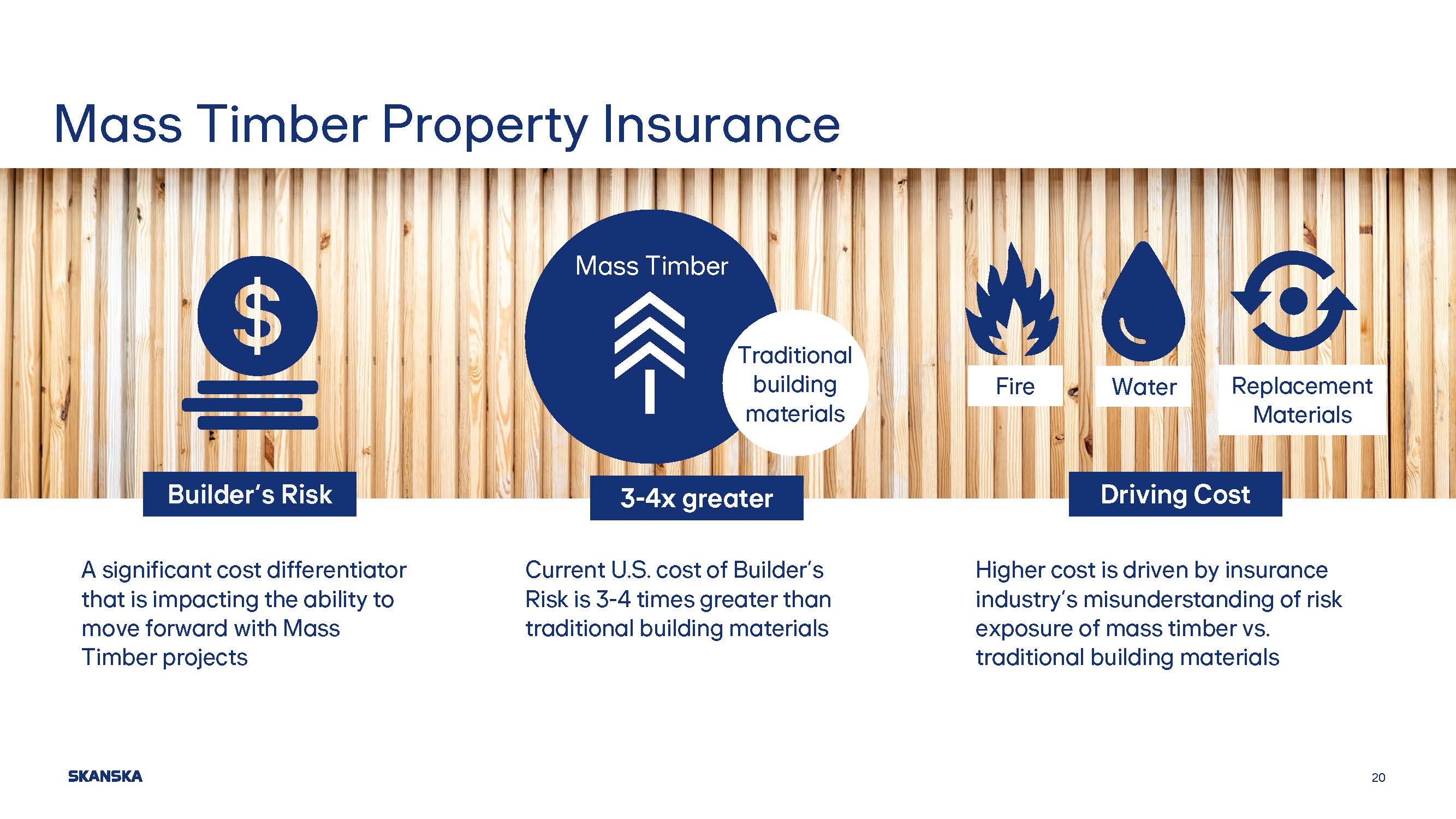
Mass timber’s time is now
As colleges and universities look at their master plans, a key goal is positive, lasting, sustainable change for their campuses. When the discussion turns to the need for new buildings and/or refurbishments, there’s no doubt that a substantial part of that conversation should focus on mass timber. (see image above)
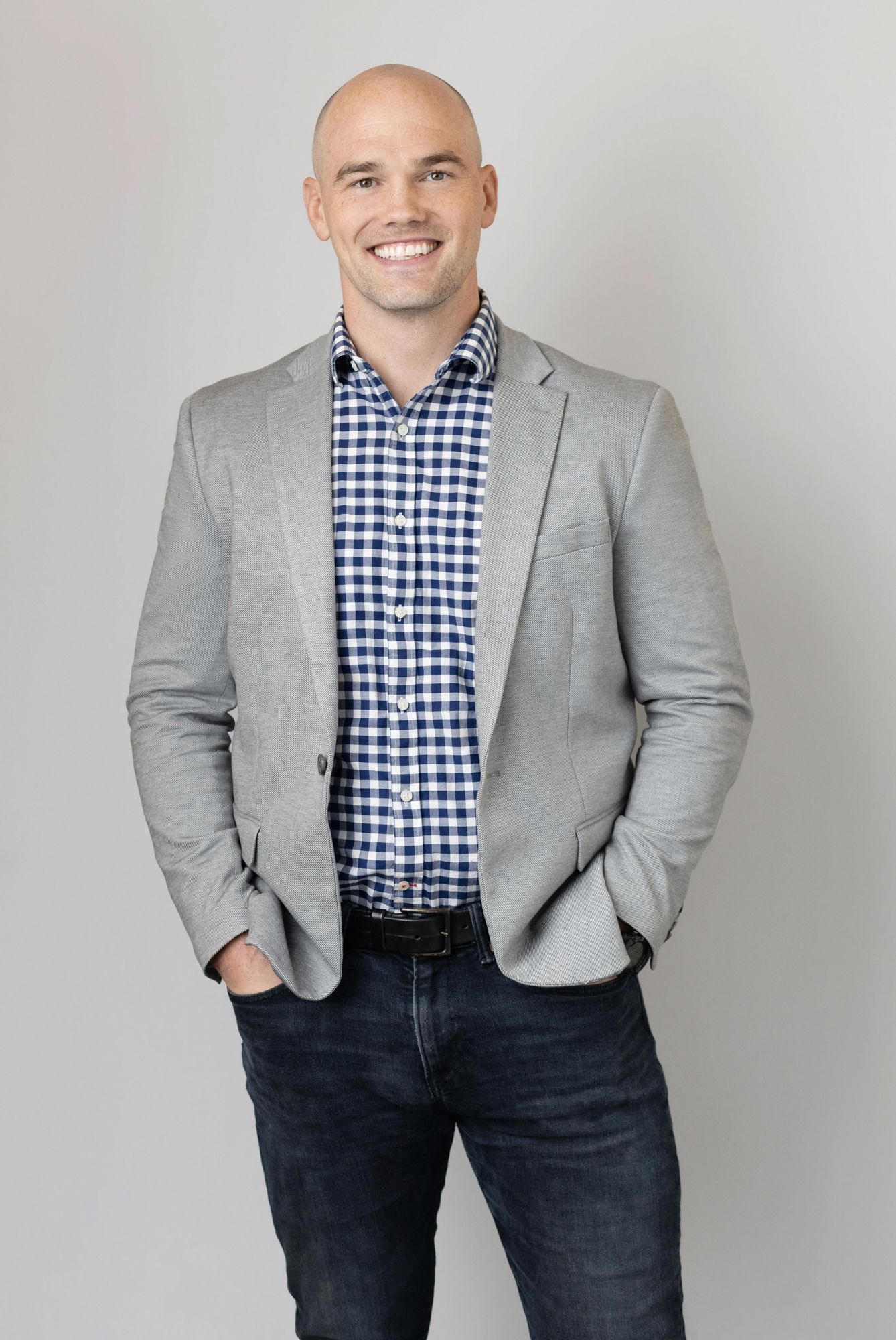
Dean Lewis, Director of Mass Timber and Prefabrication, Skanska
Dean Lewis, Director of Mass Timber and Prefabrication, Skanska
Dean Lewis is Skanska’s first director of mass timber and prefabrication. Based in his native Seattle, Dean has over 13 years of experience in mass timber and engineering roles throughout the western U.S. In his role, Dean is responsible for the company’s work on prefabrication and mass timber projects across the United States, furthering the scope and quality of Skanska’s mass timber builds, and consulting on business development efforts around mass timber projects. Connect with Dean Lewis.
This content was paid for and created by Skanska. The editorial staff of The Chronicle had no role in its preparation. Find out more about paid content.



